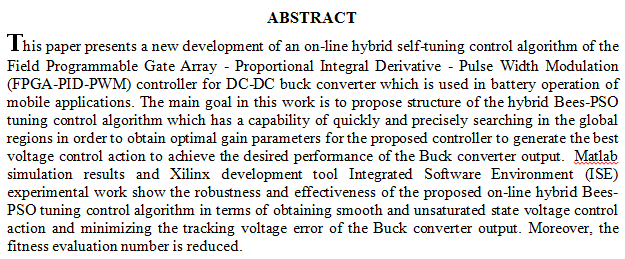
In this paper, the botnet detection problem is defined as a feature selection problem and the genetic algorithm (GA) is used to search for the best significant combination of features from the entire search space of set of features. Furthermore, the Decision Tree (DT) classifier is used as an objective function to direct the ability of the proposed GA to locate the combination of features that can correctly classify the activities into normal traffics and botnet attacks. Two datasets namely the UNSW-NB15 and the Canadian Institute for Cybersecurity Intrusion Detection System 2017 (CICIDS2017), are used as evaluation datasets. The results reveal that the proposed DT-aware GA can effectively find the relevant features from
... Show More (7)
(7)
 (2)
(2)
In this study, the mobile phone traces concern an ephemeral event which represents important densities of people. This research aims to study city pulse and human mobility evolution that would be arise during specific event (Armada festival), by modelling and simulating human mobility of the observed region, depending on CDRs (Call Detail Records) data. The most pivot questions of this research are: Why human mobility studied? What are the human life patterns in the observed region inside Rouen city during Armada festival? How life patterns and individuals' mobility could be extracted for this region from mobile DB (CDRs)? The radius of gyration parameter has been applied to elaborate human life patterns with regards to (work, off) days for
... Show MoreThe No Mobile Phone Phobia or Nomophobia notion is referred to the psychological condition once humans have a fear of being disconnected from mobile phone connectivity. Hence, it is considered as a recent age phobia that emerged nowadays as a consequence of high engagement between people, mobile data, and communication inventions, especially the smart phones. This review is based on earlier observations and current debate such as commonly used techniques that modeling and analyzing this phenomenon like statistical studies. All that in order to possess preferable comprehension concerning human reactions to the speedy technological ubiquitous. Accordingly, humans ought to restrict their utilization of mobile phones instead of prohibit
... Show More (3)
(3)
The problem of multi assembly line balancing appears as one of the most prominent and complex type of problem. The research problem of this dissertation is concerned with choosing the suitable method that includes the nature of the processes of the multi assembly type of the sewing line at factory no. (7). The State Company for Leather Manufacturing. The sewing line currently suffers from idle times at work stations which resulted in low production levels that do not meet the production plans. The authors have devised a flexible simulation model which uses the uniform distribution to generate task time for each shoe type produced by the factory. The simulation of the multi assembly line was based on assigni
... Show MoreThe printing designer's creative thinking is a deliberate mental process based on specific skills that stimulate the motivation of the student to learn and call for new information for the investigation and research to discover the problems and attitudes and through reformulating the experience in new patterns depending on the active imagination and the flexible scientific thinking through providing the largest number possible of various unfamiliar printing design models, and testing their suitability and then readjusting the results with the availability of suitable educational, learning and academic atmosphere.
The designer's creative thinking depends on main skills. Fluency skill is to put t
... Show More (16)
(16)
 (17)
(17)
Surface water flow samples were collected with distances downstream over Saqlawiya main drain whose stretch of about 24.5 km. The drain travels through different land use pattern, before, flowing into Tigris River. Eight sampling points were carefully
selected downstream the channel during dry season. The examined water parameters were pH, NH3, NO3, PO= 4, BOD5, COD, TDS, S.S, Cl-, SO= 4, Na+ , Ca+2, Mg+2, and Oil and Grease. Descriptive and inferential methods through finding the best curve fit correlation were employed in the study to test the strength of the association between water chemical characteristics and distance downstream the channel. A comparison of the values of chemical parameters at the Al-Saqlawiya Drain-Tigris Riv
The current research aims to identify the Vocational Self of the educational counselors as well as to identify the significant difference in the professional self according to the gender variable (male-female). The researcher adopted the scale of al-hasani (2015), which consisted of (34) items. It was applied to a sample of (300) school counselors (male-female) who were randomly selected from the six directorates in the Baghdad governorate for the academic year 2020/2021. The results showed that the research sample of educational counselors has a vocational self-concept. There are no statistically significant differences in the vocational self-concept between males and females among the educational counselors.
 (1)
(1)
